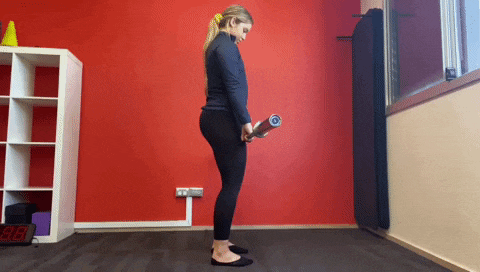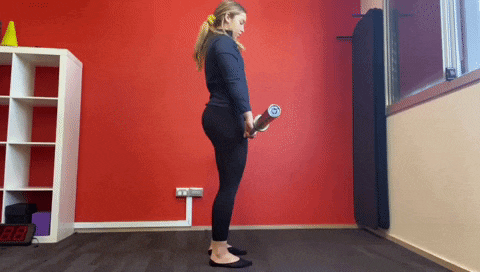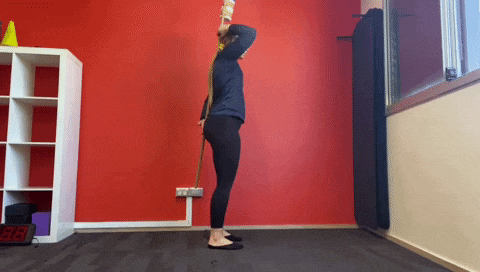Deadlifts are a fundamental movement pattern used during our daily lives and because of that, it’s really important that you know how to deadlift and how to master the basic deadlift movement pattern.
Completing this movement pattern correctly will help you in so many ways, not just the huge benefits it can provide to strength training for building muscle, or in sports-specific training to build power and speed.

What If We Don’t Have a Good Deadlift?
The deadlift is a great way to analyse what we call ‘lumbopelvic rhythm’. Lumbopelvic rhythm refers to movement of the lumbar spine (lower back) in combination with the pelvis.
Why is this important?
There is an abundance of evidence that shows that abnormal lumbopelvic rhythm increases the risk of lower back pain (Zhou, J. et al. 2016).
Assessing lumbopelvic rhythm (and therefore a deadlift) plays a huge role in a Physiotherapy and Exercise Physiology assessment to identify factors leading to injury and to correct key movement patterns.

Let’s Start With The Mechanics Of a Deadlift, What’s Actually Happening?
1. Hip Extension
-
- Initiated by a hinge (i.e. flexing at the hips) to make contact with the bar
- Followed by hip extension to lift the weight off the floor and bring our hips to the bar (this is the movement we’re training here)
- Gluteus maximus is the primary mover during a deadlift
2. Stiffen the Spine/Trunk
-
- Tightening through the core (transverse abdominis, pelvic floor and diaphragm), back extensors (erector spinae) and shoulders (lats, traps, and rhomboids)
Questions For You…
- Do you find yourself avoiding the deadlift in the gym?
- Are you walking away from deadlifts with a sore back?
- Do you feel anything BUT your glutes working?
- Are you confused with what people mean when they say ‘lift with your legs’?
If this is ringing true for you, make sure that you keep reading…

Common Deadlift Errors
Some of the most frequent and common errors that we see in people’s deadlifts are:
- Rounding back/not using our hips
- Neck extension
- Hyperextending at the top
What Constitutes a ‘Good’ Deadlift
- Hips back – as if you’re trying to sit in a chair or tap your bottom on a wall behind you
- Neutral spine – chin tucked and in line with your upper back
- Shoulder blades squeezed together
- Following bar path – along your thighs

Where Do I Start With Deadlifts
1. Learn the Movement Pattern
- A great way to start which we often utilise in the clinic is completely unloaded, with the cue of a broomstick along the spine – 3 points of contact (head, back and bottom) and when moving into a hinge these points should remain in contact

2. Practice With a Bar Without Added Weight
- Follow the ‘bar path’ – slide the bar along your thighs to move directly down to the floor
- Imagine that broomstick on your back!! Maintain neutral spin
3. Gradual Loading
- Gradually build the weight, reps or sets, or reduce rest time
- Follow the 10% rule! No more than a 10% increase in any of the above each week to ensure safe loading
- Technique is fundamental – there is no point adding load to a poor movement pattern, get good at the foundation, use the right muscles and then load it up
Still unsure?
Give us a call. A Precision Physiotherapist or Exercise Physiologist can help you!
This article was written by Physiotherapist – Rebecca Beuk, from our Precision Physio Concord clinic. If you would like more information, or feel you might benefit from a session Rebecca or any of the Precision Physio team, you can either come into our clinics, or work with us online.
How Do I Book An Appointment with Precision Physio for Help?
We’re taking the health of our clients, members and staff very seriously and our preference would be for you to call to book an appointment so that we can make sure to explain our approach to keeping you safe. You can call any of these numbers to schedule a session:
- Customer Support Centre: 02 8607 4000
- Precision Physio Concord: 02 9736 3950
- Precision Physio St Marys: 02 9623 2220
Online Consultations
Evolving with the current environment, we are also now offering online appointments, meaning that we can support anyone who is unable to leave their home. Sessions are done via our state of the art Telehealth system and as long as you have a laptop or tablet with an inbuilt camera, or a phone with camera, we can help! Online consultations would be especially effective for guiding you in how to use your foam roller.
To learn more about online consultations, please call us on any of the numbers listed above.